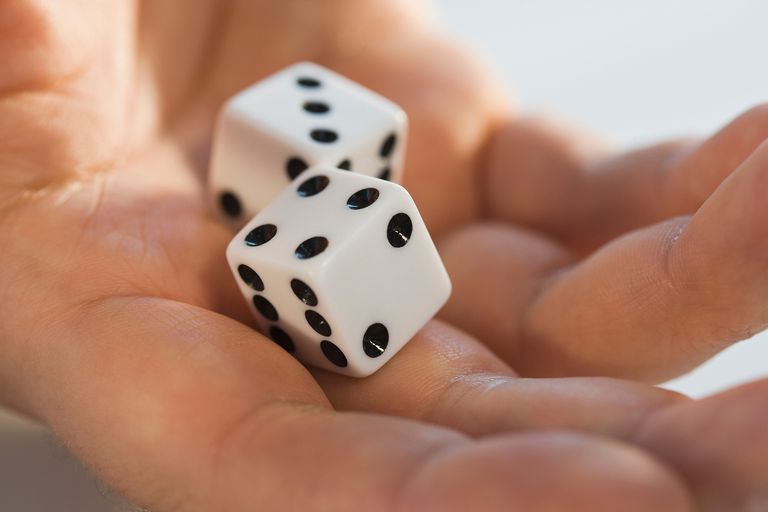Sum Dice
Players: 2
Ages: 5 and up
Cost: Free!
Math Ideas: Addition, probability, number theory
Questions to Ask:
If I roll a 3, what numbers do you hope to roll?
If both dice roll the same number, who gets a point?
Is this game fair?
Y'all.
Last week my principal approved my dream course: a semester-long elective on math games and art at the middle school where I teach.
I am ecstatic! For the next nine weeks, I get to spend one period each day just playing games with 8th graders and investigating the math that they contain. After that, we'll be creating math art inspired by some of my favorite artists, such as Regolo Bizzi (pictured). I can't imagine a more fun class to teach.
I was wondering how to start the course. What math topic should I introduce first? And I settled on one of the most fundamental questions that a kid can ask: Is this game fair?
So I used the simplest game I could think of to investigate that concept: Sum Dice*
*This week's newsletter is a two-parter. Next week, I'll share the second game in this sequence.
How to Play
Sum Dice is about as straightforward as games get: Two players determine which person will play Evens and which person will play Odds. Then each player rolls a die, and they add up the sum of the two dice. If the sum is even, the Evens player gets a point. If the sum is odd, the Odds player gets a point.
Couldn't be simpler, right? But the game becomes more intriguing if you preface the game with a simple question: Is this game fair?
Where's the Math?
So the way I see it, there are a few ways you could consider the fairness of Sum Dice.
First, you could see the game as essentially random, and since half of all numbers are even and the other half are odd, the game is fair. Some of my students associated randomness with fairness, and your kids might, too! Just remind them that the lottery is random too...
But wait: which sums can be rolled using two dice? If you roll a snake-eyes, you get a score of 2, and if you roll double sixes the score is 12.
So if you count all the possible sums (2, 3, 4, 5, 6, 7, 8, 9, 10, 11, and 12) then you find six even sums and only five odd sums. Ha! The game is clearly rigged...
Or is it? After all, it's tough to roll snake-eyes, but pretty easy to roll a 7, since there are lots of combinations of dice that add to 7 (1 and 6, 2 and 5, 3 and 4, 4 and 3, and so on). So maybe Odds actually have the advantage?
Man, this is all so confusing! Let's start over. For the sake of clarity, let's say you have one green and one red die.
So you roll the green die and get a 1. The red die has six possible outcomes, shown here. Three of those add to even sums (1+1, 1+3, and 1+5), while the other three add to odd sums. So if you roll a 1 with the green die, the game seems fair.
What if you roll a 2? Well, the red die still has six possible options. Once again, three of those outcomes add to even sums (2+2, 2+4, and 2+6) while the others add to odd sums!
If you repeat this with every green outcome, you'll notice that the pattern continues: half the sums are even, the other half are odd. So it's official: Sum Dice is fair!
Questions to Ask
If you're playing with a young child, you might want to focus your questions around the meaning of "evenness." After all, this will likely be a new classification for pre-school kids, or even early elementary students.
One way to talk about evenness is by pairing objects. Can you split up 10 M&Ms into pairs? What about 13? What happens if I eat one of the 13 M&Ms?Your kids can have a nice little diversion, and a nice snack, by talking about evens and odds this way.
For older kids, you can talk through the game mid-roll. Let's say you are Evens and your child is Odds. You roll a 5. Ask your child "What numbers do you hope to roll?" You can follow up this discussion with "What do those three numbers have in common?" to get your kid thinking about oddness and evenness as attributes that a number can have. Hey, remember attributes?
Here's a nice introduction to number theory: Pose the question, "If we both roll the same number, who gets a point?" Your child can determine the answer by testing all the options, so press the point. What if we had 10 sided dice and each rolled the same number. What if we had 30 sided dice? Could all of those sums really be even? (They could be, and are!)
And, of course, you can definitely run your child through the exploration of whether the game is fair, as I outlined above. Especially since that'll come in handy when you play the sequel to Sum Dice, which I'll show you next week.






